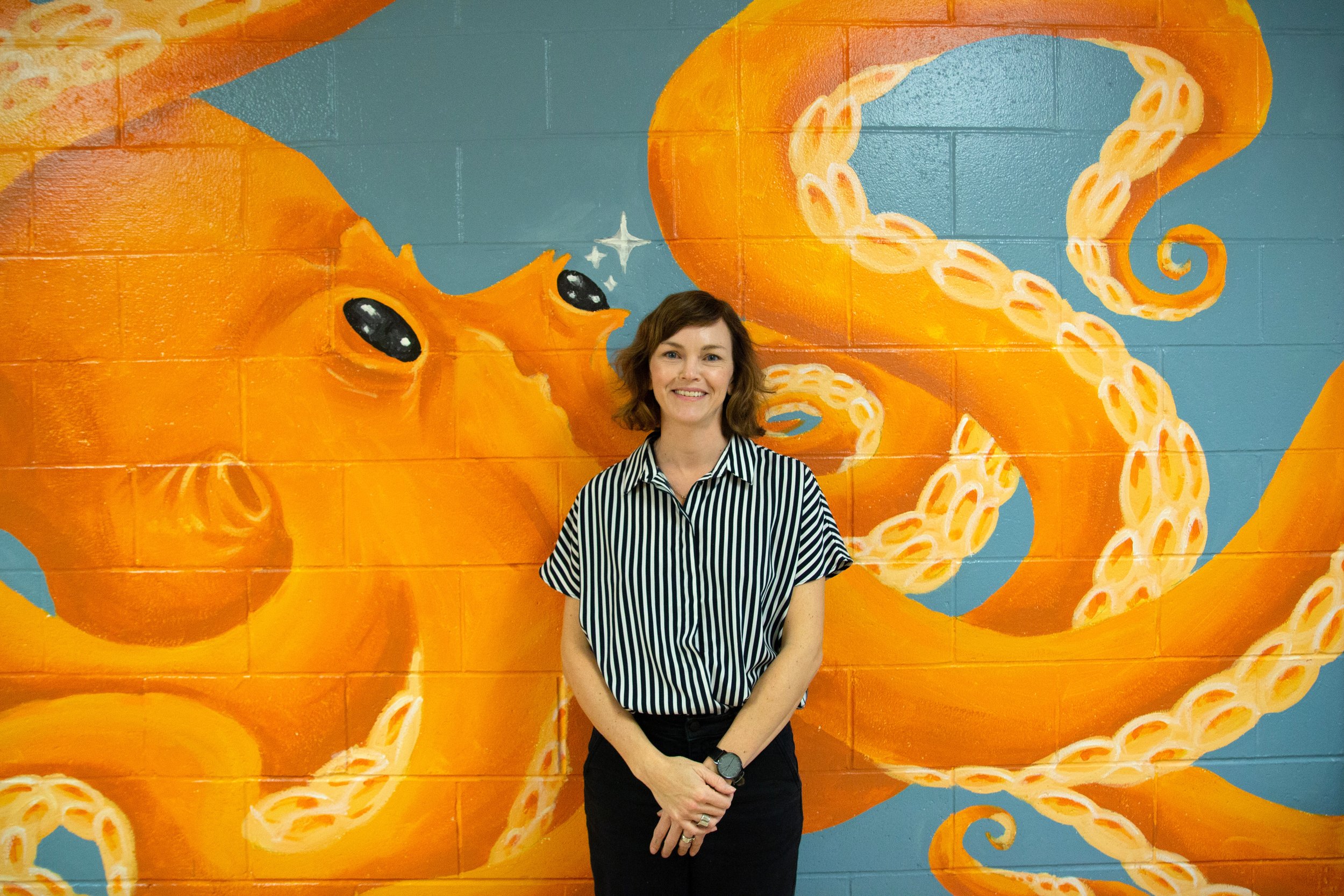Elise Pelletier
Visual Arts Educator at Scarborough High School and Youth Art Month Statewide Coordinator
How did you come to be involved with YAM?
I joined the Maine Art Education Association about eight years ago, when I started teaching at Scarborough High School. I had taught in Brooklyn, New York, prior to working in Maine, and I wasn't a part of an art education association there. I felt like I was missing out on engaging with other art educators and really getting a sense of what opportunities there were for youth across the state. My involvement with Youth Art Month began five years ago, when the MAEA Board was looking for someone to help with organizing the PMA show. It was the right timing for me, as I was looking for an outlet beyond my classroom to promote the importance of art education throughout the state.
Why is a program like YAM important? Why should I care?
Youth Art Month is a national program that provides a medium for recognizing skills developed through visual arts experiences unlike any other curriculum subjects, including: Problem solving, creativity, observation, and communication. It gives educators, institutions, non-profits, and school districts the opportunity to highlight the importance of K-12 art education. The next generation of creative thinkers need as many opportunities as possible to share their voice. YAM is a wonderful avenue to achieve this goal, and the PMA show especially, elevates this message.
Tell us an anecdote or heart warming story about submissions, young artists, or outcomes you’ve experienced with YAM.
The YAM 2021 exhibition was an online exhibition and celebration due to COVID. I was nervous about the youth artists and families not wanting to attend an online Zoom celebration. But as soon as the celebration started, more and more squares popped up on the screen. During the first ceremony (of three that were held), there were multiple grandparents and extended family members that joined unbeknownst to the artist. Seeing the surprised looks on the artist’s faces to see family members from places outside of Maine, was truly a joy. Even though it was such a difficult year for all students and educators, the overwhelming support for the artists was a bright spot during the pandemic.
Why did you choose to become an educator in the arts?
I come from a family of educators and had no plans to teach. I was in the graphic design field for many years, but often felt uninspired. It wasn’t until I started working with youth in an afterschool art program, that a lightbulb went off. I loved engaging kids in art making and knew that this was what I wanted to keep doing. That led me back to grad school and now fourteen years later, I know that encouraging kids to seek out their creativity, and finding their voice through visual arts is the most rewarding job I could have.
“Art education challenges students with different points of view, teaches them to empathize with others, and gives them the opportunity to reflect on the human experience.”
What do you wish more people knew about arts education?
Arts education is imperative and non-negotiable for preparing the next generation to be global citizens. Art education challenges students with different points of view, teaches them to empathize with others, and gives them the opportunity to reflect on the human experience. As a society, we need more creative thinkers to contribute to the economy and keep communities thriving.
The PMA has the Susie Konkel Pass, The Tidal Shift Award, YAM, etc, but can do more for our young communities, emerging artists, etc. What would you like to see the museum do more of in the coming years around youth engagement? What’s missing?
I’d love to see opportunities for students to participate in programs that act as artistic incubators. Giving students the chance to work with professional artists and visual experts to learn and create together. I think students don’t understand all the possibilities available to them within the arts unless they are exposed to those professions and possibilities.
Aside, or inclusive, of the young folks centered questions, generally, what should a museum’s role be within our society? What do you seek out from the cultural orgs you support, visit, attend, and why?
I think museums should function like community centers, welcoming everyone, especially those that are marginalized; to engage with new ideas, history, and making. For myself and my family, I try to seek out opportunities that I’m curious about and may not know anything about. That’s where the surprise always happens. I want to expose my kids to things that are outside their everyday comfort zone and let them participate in a creative world.





